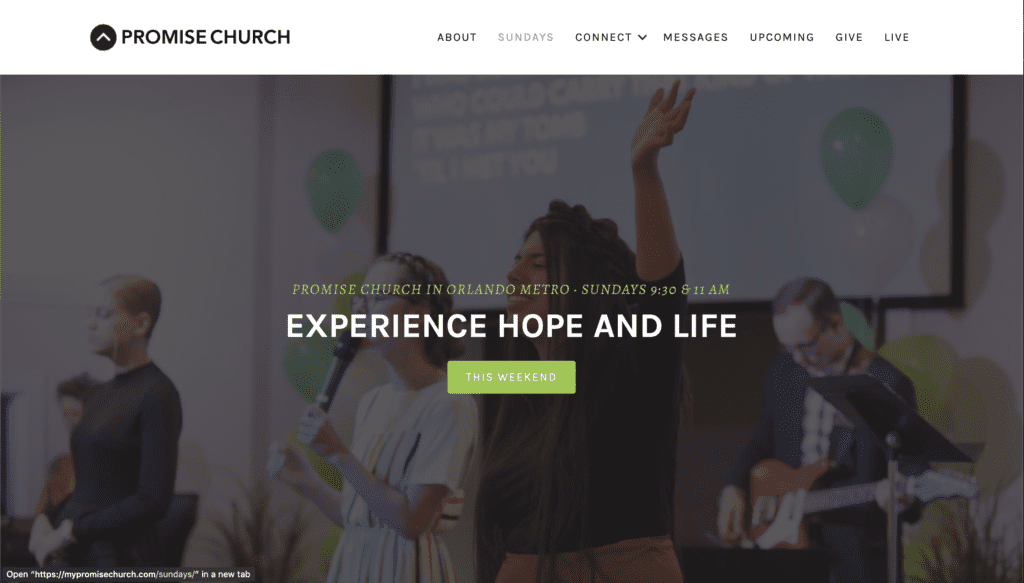When I say “marketing” do you imagine someone going door-to-door in to sell magazine subscriptions, or to spread their church’s message?
This type of marketing typically makes people cringe. Some people won’t answer the door, while others who do answer only shut it after a few short seconds of the pitch.
This is not effective marketing.
Today’s article will not be giving you tips on how to master the outdated, aggressive forms of marketing.
Instead, we’ll be talking about ways to market your church and ensure that its message is not lost in the process. After all, marketing is a necessary step towards the growth of your church.
I promise that anyone can tackle these strategies without any uncomfortable door-to-door solicitation.
Let’s begin.
Marketing is Not the Same as Selling
Before we jump in, it’s important to leave this old concept behind us.
Marketing does not automatically mean you’ll be forced to “sell” your church to potential new members.
Instead, I’d prefer that you begin thinking of marketing in terms such as building relationships and communicating with your community.
This is exactly what marketing should be.
Building Relationships Comes from Effective Communication
This may seem like a chicken and egg scenario, to build relationships, you’ll need to effectively communicate with those around you first.
How can you do this?
By paying attention to every form of communication your church uses. In particular, that means starting with an up-to-date website that showcases your church’s message.
Remember, new community members are most likely to find your church by performing a simple Google search of local churches in the area.
Once they land on your church’s website, will they find a warm and welcoming message, or will they see a site that hasn’t been worked on in quite sometime?
Your website’s homepage is an important first step towards building relationships with newcomers. It’s your first chance to communicate to them.
Your homepage should also have a welcome message for newcomers or a “Start Here” link on the top navigation. This makes it easy for new members to find their way around.
Your “Start Here” link or welcome message should lead to a page that’s specifically dedicated to new members. It should showcase information such as:
- Your church’s mission
- Your service hours
- Your contact information
This Church in Orlando, FL does a great job at this.
As soon as someone lands on their site, they’re immediately greeted and invited to plan their visit. First, the welcome message displayed in the center gives them a chance to learn about this weekend. Plus, they have an “Sundays” link in their top navigation.
When users click the “Sundays” link, they’re immediately given the service times and contact information via a dropdown feature.

When users click the “Sundays” link in the main navigation, they’re immediately directed to a welcome page that includes “Need to Knows” such as recent sermons, what to expect, an introduction to the pastor, kids min checkin interactions, and of course time and directions prompts.
The church is simply welcoming new visitors (effective communication) with their message and indirectly marketing what’s great about their church.
This is a perfect example of effectively communicating, and marketing without coming across salesy.
Your church’s favorite social media channels should also do the same thing.
Every so often, it’s a good idea to post about how new members are always welcome.
Encourage your existing community members to “tag” a friend or family member in the comments so they’ll automatically be notified.
And if your church routinely holds special events to welcome new members, your social media should reflect that too.
Announce the event by creating a post or event page and ask your community members to “tag” a friend they’d like to invite.
This opens up a channel of communication, which is the first step in building a genuine relationship.
Keep your post light and warm as you welcome new members. Now is not the time to promote why your church is the right choice for them—this is only a warm welcome.
Use Community Calendars to Promote Your Events
I hate to use the word “promote”, but it’s essentially what you’re doing. You need to let people in the community know about your church’s events.
Create an Event page on Facebook and post it on your church’s website. Add the event to community calendars maintained by local news stations, too. Keep in mind that an admin will need to approve your post so make sure to follow all of the rules before submitting.
When describing your event, mention that new community members are welcome and encouraged to check out the fun. This is a great way to market and promote your church while creating community activities.
This simple strategy won’t make you feel like you have to promote your message in an uncomfortable way, but it will help you successfully market your church.
Focus on Building Relationships with Existing Members
Although we’re mainly targeting new church goers when we talk about marketing, it’s important not to forget about your existing community.
After all, if your existing members are excited to be there and feel loved and welcomed, they’re more likely to share these feelings with their friends and family.
So why not show them how much you care about them?
Holding community appreciation events lets you focus on your existing members. Let them know just how far your church has come due to their continued support.
During these lighthearted occasions, get to know your community on a deeper level by asking the right questions and truly listening to what people have to say.
Establishing these deeper connections will create evangelists for your church. These members will go above and beyond for your church and the community. They’re also more likely to “talk about and share your message and get involved in any way they can.”
Although this may not seem like marketing, it’s truly one of the best forms of publicity. To capture this “Word of Mouth” marketing, you need to build genuine relationships with your existing members.
Once you’ve established these deeper connections, your church community will feel compelled to share your message so that those around them feel just as inspired.
As you can see, marketing your church these days isn’t so bad. By communicating effectively and creating long-lasting relationships, you’ll be putting your church in a position to grow exponentially.
Don’t forget to keep your message authentic and be careful about coming across as pushy. I know marketing used to conjure up the idea of being salesy, but this is simply not the case anymore.

